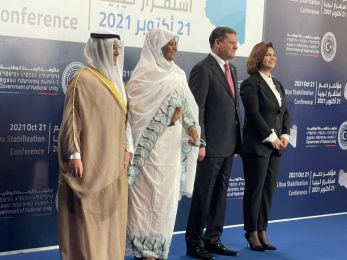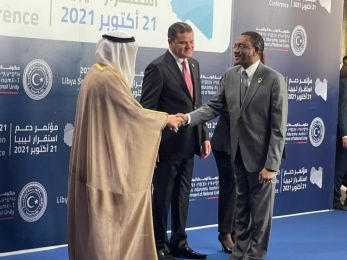Tanzanian farmers clear more land to expand coffee plantations
Dar es Salaam, Tanzania (PANA) - Tanzania's coffee sector is poised for expansion, with cultivated areas projected to grow from 265,000 hectares (HA) in marketing year (MY) 2024/25 to 270,000 hectares in MY 2025/26, driven primarily by Robusta coffee.
In the northwestern Kagera region, particularly in Ngara district, farmers are clearing land to establish new coffee farms, benefiting from subsidised seedlings and strong farm gate prices.
However, the harvested area will remain at 265,000 hectares until newly planted farms reach production maturity, according to the latest annual report on the industry.
Coffee is Tanzania’s most significant cash crop, cultivated by over 40 percent of farmers and occupying 39 percent of land under permanent crops. Production occurs through three primary systems: 1) Pure stand smallholder farming (dominant in the South, 2) Intercropped coffee and banana farming (common in the North and West and 3) Estate sector, contributing less than 10 percent of total production
Tanzania produces both Arabica (60.9 percent) and Robusta (39.1 percent) coffee. Arabica is primarily grown in the far north (Kilimanjaro, Arusha)), and the far south (Mbeya, Iringa Njombe, and Mbinga) of the country. Meanwhile Robusta is cultivated in the Kagera region in the northwest corner of the country, near Lake Victoria
Tanzania’s coffee production is projected to reach 1.45 million 60-kilogram bags in marketing year 2025/26, up from 1.35 million bags the previous year. This increase is driven by ongoing rehabilitation efforts, favourable weather conditions, and the crop’s natural cycle.
Rising coffee prices, the report said, have incentivised farmers to expand plantations, invest in advanced fertilisers and equipment, and enhance production efficiency. Stable pricing has strengthened agricultural marketing cooperative societies, enabling financial support and training for growers.
Adequate rainfall and consistent temperatures have fostered optimal growing conditions, facilitating recovery from previous droughts and boosting yields.
Meanwhile, a strong global demand continues to drive production and exports, reinforcing Tanzania’s position in the international coffee market.
As one of three major global producers of Colombian Mild Arabica coffee (alongside Colombia and Kenya), Tanzania accounts for six percent of total production in this category. About 90 percent of production comes from 320,000 smallholder farmers, with the remaining output from around 100 large farms. The coffee harvest season runs from July to October
While the government of Tanzania provides subsidised fertiliser to tobacco, maize, and rice farmers, support to coffee growers is negligible. Fertiliser usage varies across regions, with estimates indicating that approximately 40 percent of farmers in the south and north and only two percent in the west use inorganic fertilisers.
As of September 2024, subsidised fertiliser prices ranged from US $23 to US $28 per 50-kilogram bag (US $460-560 per ton), with costs influenced by proximity to Dar es Salaam port.
Historically, the high cost of fertiliser limited farmers' ability to apply recommended quantities, with an average application rate of 50 kilograms per hectare. Many farmers reported using minimal amounts -
around one bag per hectare - or none, due to affordability constraints.
Coffee trees require substantial nutrient replenishment, extracting approximately 40 kilograms of nitrogen, 2.2 kilograms of phosphorus,
and 53 kilograms of potassium per ton of green coffee beans. To maintain productivity, annual soil nutrient replacement is essential.
A balanced fertilisation strategy incorporating macronutrients (nitrogen, phosphorus, potassium) and micronutrients (zinc, boron) is recommended, with specific application rates varying based on soil conditions and tree age.
Tanzania’s coffee production for the 2024/25 marketing year is projected to remain at 1.35 million bags, unchanged from the previous year. This stability is due to rehabilitated coffee plants not yet reaching full maturation and limited fertiliser use. An analysis of coffee export trends from July 2024 to March 2025, along with projections for April to June 2025, supports current year estimates of 1.35 million bags.
By November 2023, the Tanzania Coffee Board had already distributed 13 million improved seedlings to farmers, with plans to distribute a total of 25 million seedlings by the end of 2025. Despite this expansion, the harvested area is expected to remain at 265,000 hectares, as the Tanzanian government prioritises the rehabilitation of existing coffee farms rather than the establishment of new plantations or the repurposing of land.
Tanzania's coffee sector is guided by policies aimed at increasing production, improving quality, and expanding market access. The Tanzania Coffee Industry Development Strategy (2020–2025) focuses on enhancing coffee varieties, expanding cultivation, and improving access to agricultural inputs through seedling distribution, fertilizer promotion, and research on pest and disease management.
In a significant development, in April 2025, the government signed a Memorandum of Understanding (MoU) with Corus International to mobilise 30 million US dollars (approximately 81 billion Tanzanian
shillings) for coffee production and market expansion.
The agreement, signed between the Tanzania Coffee Board and the Cereals and Other Produce Regulatory Authority, was witnessed by officials from the Ministry of Agriculture.
Tanzania Coffee Board emphasized that the MoU would improve coffee quality, enhance market access, and raise farmers' incomes while fostering a more supportive agricultural business environment.
Tanzania’s coffee trade is set for modest growth, with total exports projected to increase to 1.37 million bags in MY 2025/26, up from 1.26 million bags the previous year. This rise is driven by economic incentives and favourable agricultural conditions.
Expanding production capacity and improved farming techniques have strengthened Tanzania’s ability to meet growing global demand. The strong appeal of Tanzanian premium Arabica coffee in key markets continues to enhance the country’s presence in the international coffee trade.
Stable temperatures and consistent rainfall this year have created optimal growing conditions, enabling crops to recover from previous droughts and boosting yields. Improved fertiliser use and the adoption of enhanced farming practices have further supported production growth.
-0- PANA AR/MA 26May2025






